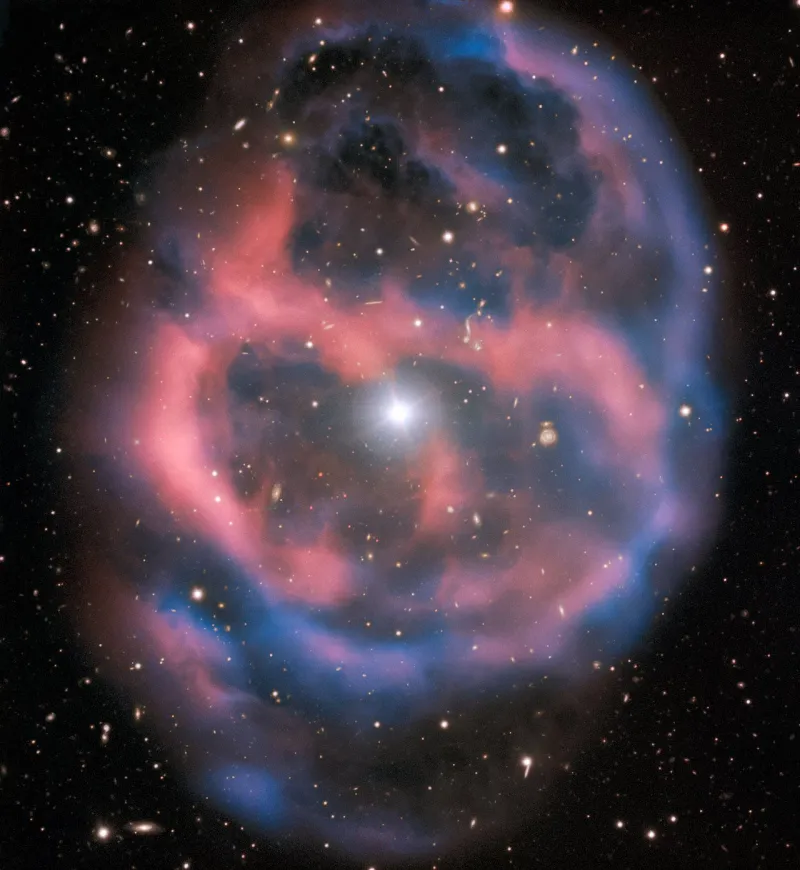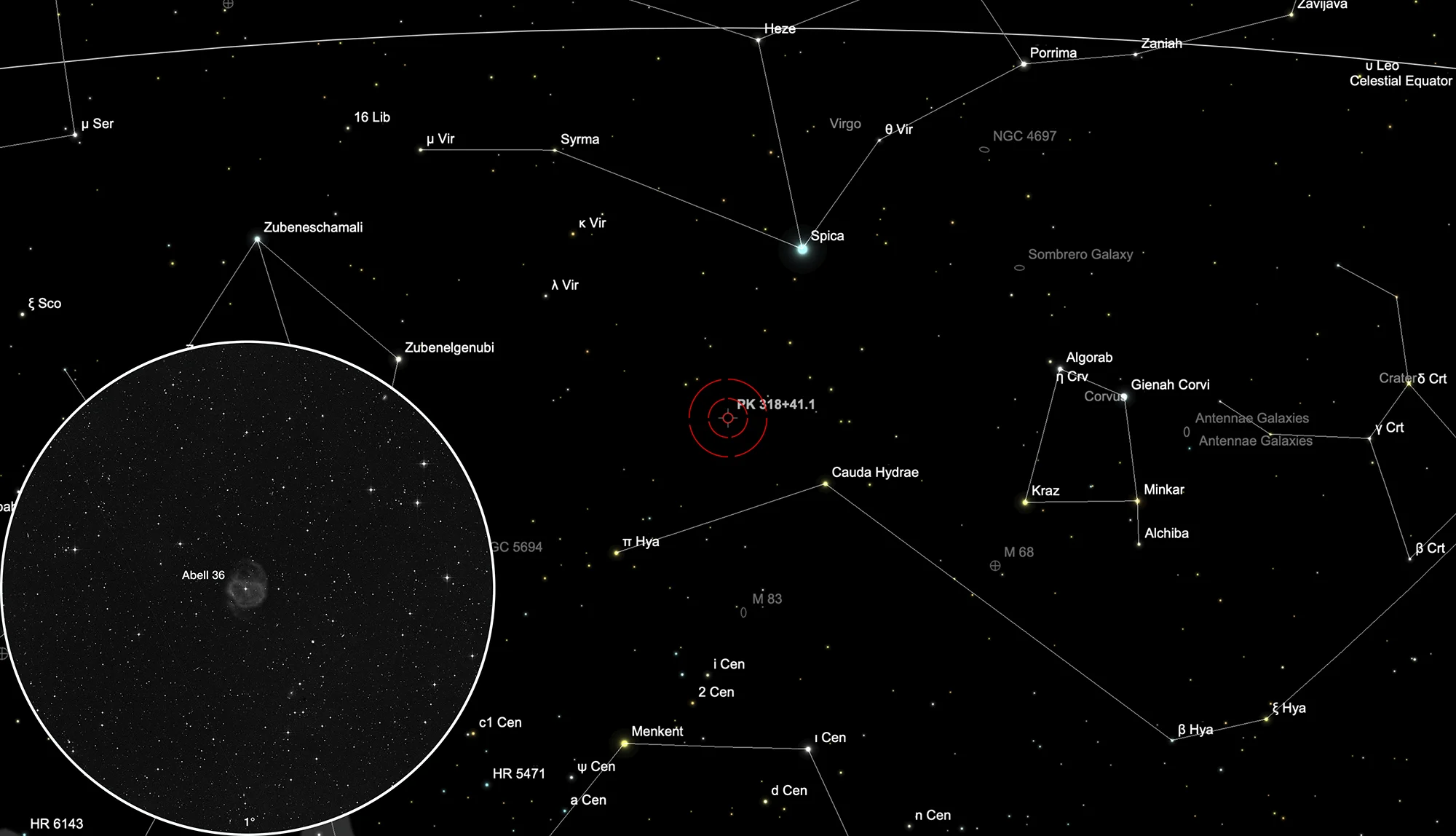Planetary Nebula Abell 36

History
The planetary nebula Abell 36 (PN A55 25, PN A66 36, PK 318+41.1) was discovered in the 1950ies by the American astronomer George Ogden Abell on the photo plates of the «Palomar Observatory Sky Survey» (POSS). In 1955 he published his first and 1966 is second list list of planetary nebulae. [331, 332]
Physical Properties
The planetary nebula is surrounded by a large, barrel-shaped very faint halo of Hα ionized gas, measuring 4° x 5° in angular diameter. The inner part of the nebula resembles a bit the helical shaped Cat's Eye Nebula NGC 6543 with two pairs of bipolar lobes. [627] The age of the nebula is estimated around 10'000 years. [626] Given distances range from 380 pc through 436 parsec. [145]
| Designations | PN G318.4+41.4: A 36, PK 318+41.1, A55 25, ESO 577-24, VV' 116 |
| Right Ascension (J2000.0) | 13h 40m 41s |
| Declination (J2000.0) | -19° 52' 57" |
| Dimensions | 370." (optical), 360." (radio) |
| Distance | 0.4 kpc |
| Radial Velocity | +36.8 ± 3.3 km/s |
| Expansion Velocity | 36.0 (O-III) km/s |
| C-Star Designations | AG82 156, CSI -19 -13379, FB 138, UBV 12237 |
| C-Star Magnitude | U: 9.98, B: 11.28, V: 11.53 |
| C-Star Spectral Type | O(H) |
| Discoverer | ABELL 1955 |
Finder Chart
The planetary nebula Abell 33 is in the the constellation Virgo south of Spica. On 18 April it is in opposition to the Sun and crosses the meridian at local midnight. The best observation time is December to September.
